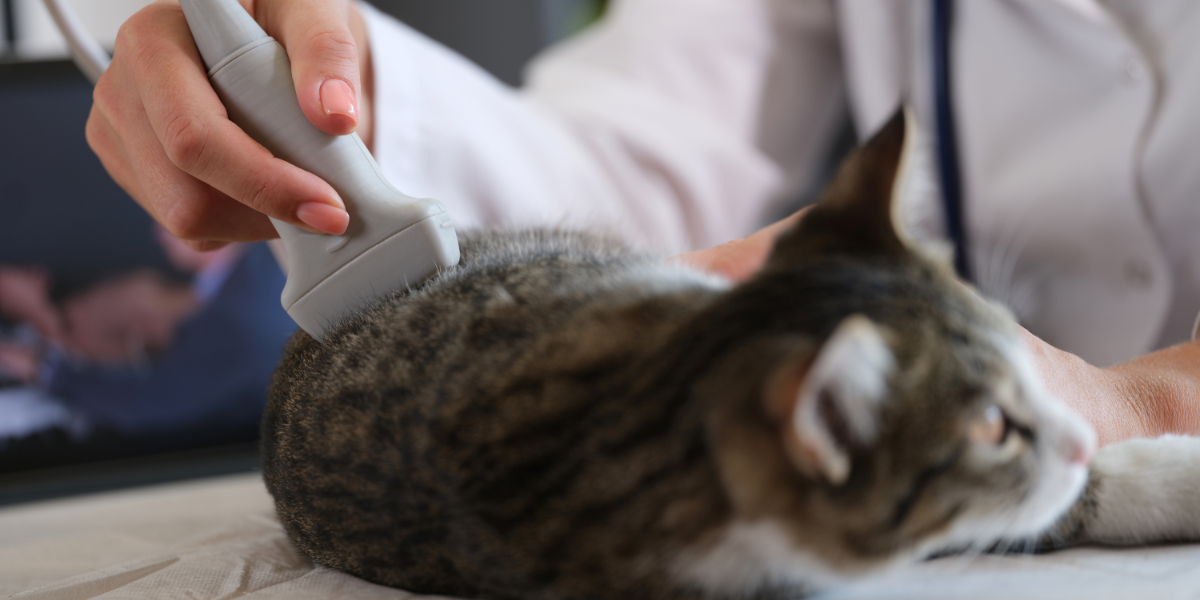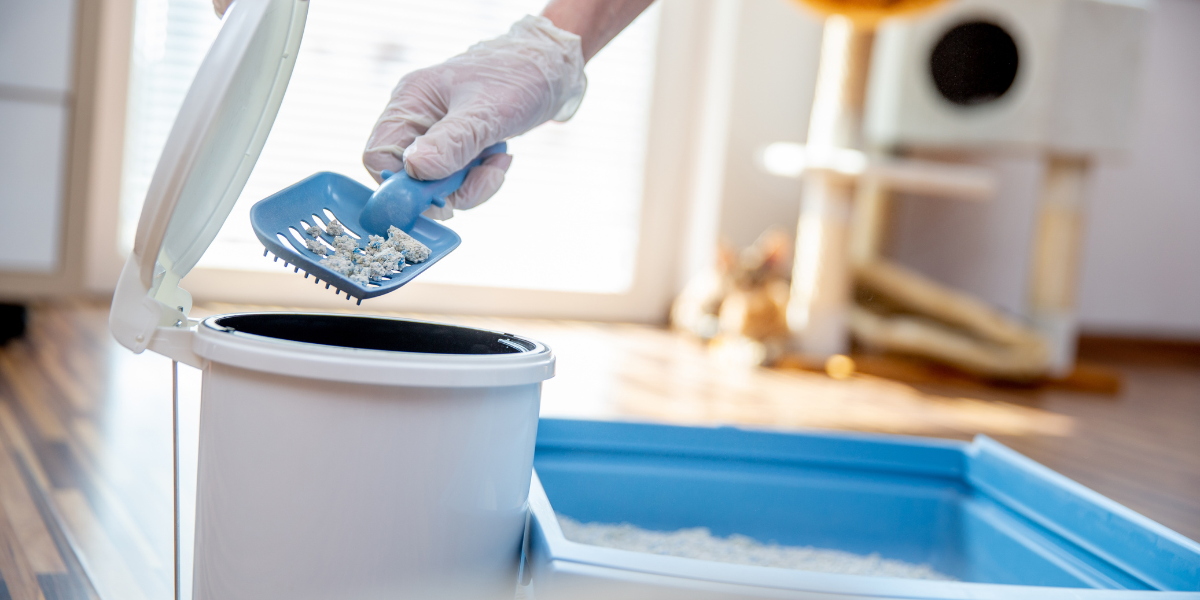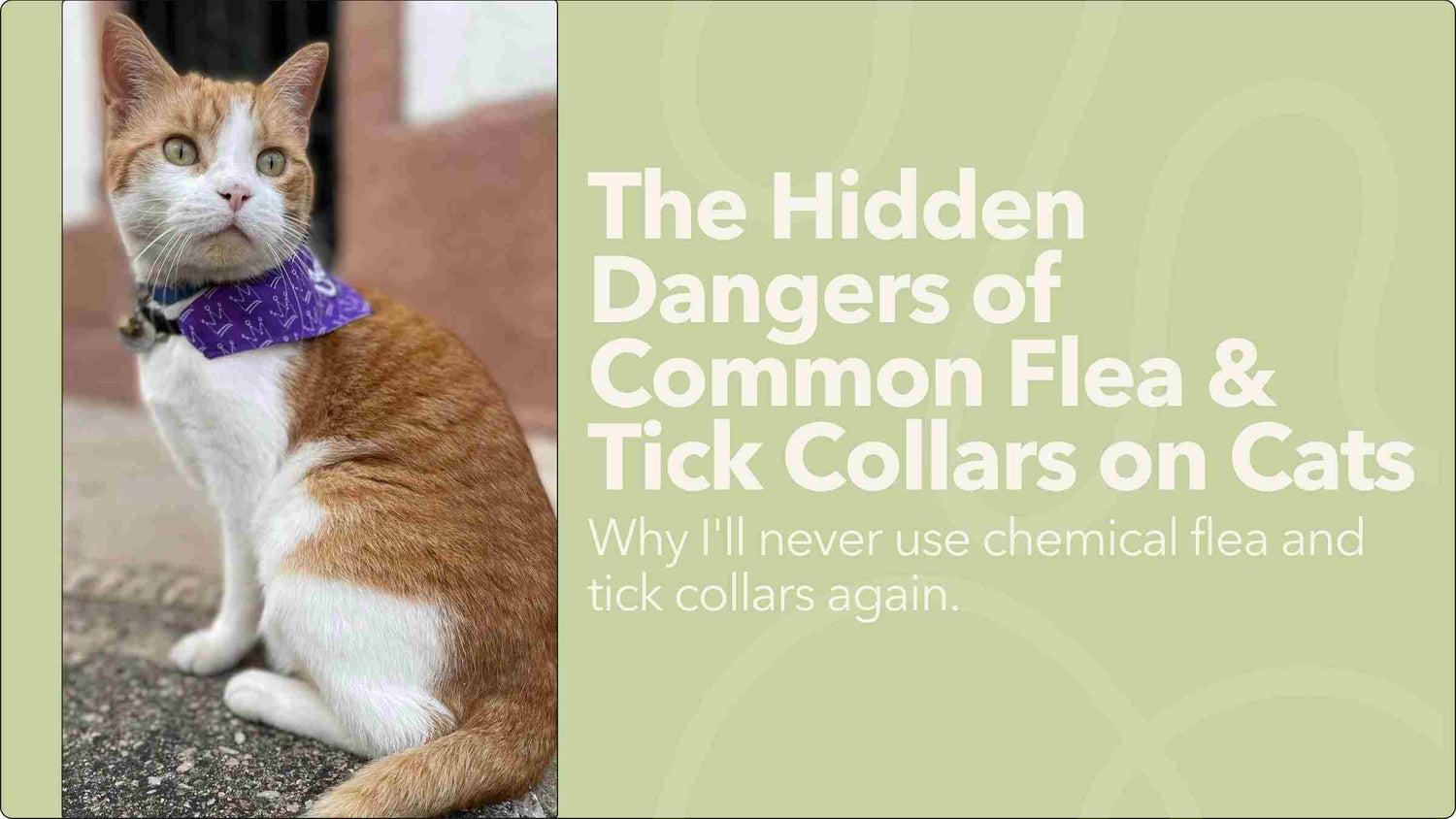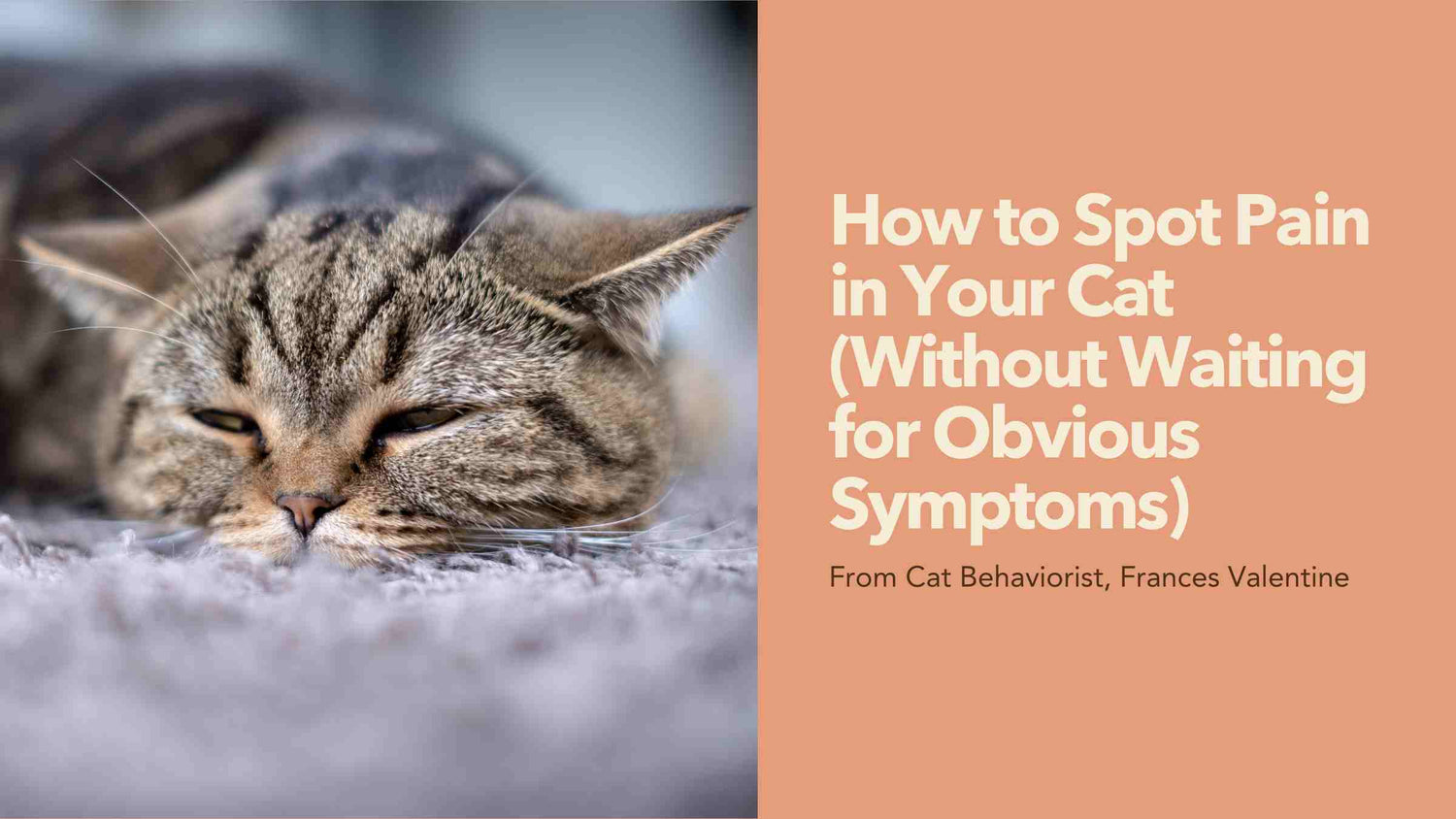Table of Contents
- Cat Scratch Disease
- Toxoplasmosis
- Salmonella
- Fungal infections
- Exacerbation of asthma symptoms
- Bronchitis
- Lung infections from dust particles
How to clean your cat’s litter box
Cleaning a litter box is probably one of the biggest downsides to owning a cat. Sure, seeing your furniture all scratched up and covered in fur can be infuriating, but these annoyances don’t really compare to scooping clumps of cat waste daily out of a small box. A mere whiff of that vileness is enough to make your stomach hurl, but someone’s gotta do the dirty work. The horrific odor that emanates from your cat’s waste is revolting, but what’s lurking behind the stench is even more sickening—literally and figuratively.
Dirty litter boxes are ideal breeding grounds for bacteria and other disease-causing microorganisms. Failure to clean them regularly can pose serious health risks for both you and your cat.
Health Hazards for Cats

Cats are notorious for being sticklers for cleanliness and hygiene. They can get very obsessive-compulsive about pretty much everything, and that includes their litter boxes. Just like what us humans feel about dirty toilets and bathrooms, cats also abhor dirty litter boxes and won’t even dare step in a box full of filth to do their business. If the box is not clean, they will try to hold it in, and that’s where the problem begins.
Kidney Problems
Cats may hold waste in for prolonged periods due to a dirty litter box, leading to strain on the kidneys. Over time, this can contribute to kidney disease and urinary blockages. Chronic kidney issues affect 30-40% of cats over 10 years, and a staggering 81% of cats over 15 years old. Kidney problems can be life-threatening if not managed properly. But here's the good news: as pet parents, we can make a real difference. By keeping our cat's litter box clean, ensuring they have plenty of fresh water, and feeding them a kidney-friendly diet recommended by their veterinarian, we can help prevent kidney issues.
Urinary Tract Infections (UTIs)
Urinary tract infections (UTIs) can be a painful ordeal for our kitties. A UTI is a bacterial infection affecting the urinary system, including the bladder and urethra. They can cause inflammation, pain, frequent urination, and difficulty urinating. Unfortunately, dirty litter boxes can contribute to these uncomfortable infections. Feline Lower Urinary Tract Disease (FLUTD) can arise from bacteria in a soiled litter box making its way into a cat's urinary tract and bladder. If left untreated, UTIs can lead to more severe complications, such as kidney infections. There are steps we can take to protect our cats. By cleaning their litter box daily, providing them with fresh water, and feeding them a balanced diet, we can support their urinary health and keep those pesky infections at bay.
Ammonia Exposure
Ammonia is a common byproduct of cat urine breakdown, and when concentrated in poorly ventilated areas, it can lead to respiratory problems in cats. Prolonged exposure to ammonia vapors can irritate the respiratory tract, leading to inflammation, coughing, and difficulty breathing, exacerbating existing respiratory conditions like asthma. A dirty litter box only amplifies this risk by increasing the concentration of ammonia vapors in the air. By ensuring proper ventilation in our cat's litter box area and maintaining a clean litter box, we can minimize ammonia exposure and protect the respiratory health of our cats.
Parasites
Parasites may be small, but they can pose big health risks to our kitties. Common internal parasites like roundworms, hookworms, and tapeworms can wreak havoc on a cat's health, including skin irritation, anemia, weight loss, gastrointestinal upset, and in severe cases, organ damage. Regular cleaning and proper disposal of cat waste from litter boxes can help prevent parasitic infections.
Behavioral Issues
Cats may develop behavioral issues, such as inappropriate elimination, when faced with a dirty litter box. VCA Animal Hospitals reported that inappropriate elimination is one of the most common behavioral complaints among cat owners. At least 10% of all cats develop elimination problems. Cats are naturally clean animals and may refuse to use a soiled litter box, leading to accidents outside the box. A dirty litter box can cause stress and anxiety in cats, contributing to behavioral problems. While not directly life-threatening, behavioral issues can strain the bond between a cat and its owner and impact the cat's overall well-being. Owners should clean the litter box regularly and address any underlying stressors to prevent behavioral issues.
Health Hazards for Humans
If you think a dirty litter only affects cats, then think again. Humans are also at risk of contracting diseases from it as much as cats do. While most diseases can be spread only between the same species, there are diseases that can be transferred from cats to humans through waste exposure. Here are some of them:
Cat Scratch Disease
Cat scratch disease, also known as CSD, is a bacterial infection that can pass between cats and humans, known as zoonotic disease. Humans can contract it from direct contact with a litter box contaminated with Bartonella henselae bacteria. While outdoor cats are more commonly associated with Bartonella infections, indoor cats can also harbor these bacteria through infected ticks and fleas.
Symptoms may include:
- Fever
- Fatigue
- Swollen lymph nodes
- Rash at the site of the scratch or bite
- In severe cases, complications such as encephalitis (brain swelling) or neuroretinitis (eye inflammation causing blurry vision) can occur
Dirty litter boxes become potential hotspots for Bartonella bacteria, increasing the risk of CSD transmission. Individuals at higher risk include children, the elderly, and those with weakened immune systems. According to the Centers for Disease Control and Prevention (CDC), approximately 12,000 cases of cat scratch disease are reported in the United States each year. To minimize the risk, ensure regular cleaning of the litter box, thorough hand washing after handling, and immediate treatment for any scratches or bites.
Toxoplasmosis

Toxoplasmosis is another disease that can be passed on by cats to humans through their waste. According to Centers for Disease Control and Prevention, more than 40 million people in the United States may be infected with this zoonotic disease. Toxoplasmosis is caused by a single-celled parasite called Toxoplasma gondii, and is capable of staying in the human body for an indefinite period of time.
Symptoms include:
- Flu-like symptoms
- Muscle aches
- Swollen lymph nodes
- In severe cases, it has even been associated with suicidal tendencies
To prevent toxoplasmosis it’s recommended to clean litter boxes twice per day, avoid direct contact with cat feces if you’re pregnant (if possible), and thoroughly wash your hands after litter box cleanings.
Salmonella
Salmonella isn’t only acquired by eating uncooked meat. It can also be transmitted through direct contact with animal feces, or in this case, a dirty litter box. This bacterial infection generally attacks the gut.
Symptoms include:
- Diarrhea
- Stomach cramps
- Fever
- Vomiting
Young children, elderly individuals, and those with weakened immune systems are at higher risk of severe illness from salmonella infection. According to the CDC, Salmonella causes approximately 1.35 million infections, 26,500 hospitalizations, and 420 deaths in the United States each year. Preventive measures include maintaining a clean litter box environment and thorough hand washing after handling soiled litter boxes or feeding cats raw meat.
Fungal Infections
When a cat steps in a filthy litter box, it can pick up various kinds of fungal infections like hookworms and ringworms. These infections thrive in filthy litter boxes, and they can easily spread to humans through contact with an infected cat.
Symptoms include:
- Skin rashes
- Itching
- Hair loss
Children, individuals with weakened immune systems, and those with existing skin conditions are more vulnerable to fungal infections. According to experts, around 20%-25% of the population may experience a ringworm infection at any given time. To prevent fungal infections, cat owners should diligently clean and disinfect litter boxes, and remember to wash their hands after handling them.
Exacerbation of Asthma Symptoms
For people with asthma or other respiratory conditions, exposure to airborne particles from cat litter can worsen symptoms and lead to breathing difficulties. The fine dust in litter can irritate the airways, causing coughing, wheezing, chest tightness, and shortness of breath. To minimize the risk of respiratory irritation and maintain clean indoor air, it's crucial to ensure proper ventilation and regularly clean litter boxes.
Bronchitis
Continuous exposure to airborne litter dust may increase the likelihood of developing bronchitis, an inflammation of the airways that can result in persistent coughing, chest discomfort, and breathing difficulties. Individuals with pre-existing respiratory conditions are especially susceptible to bronchitis, as it can exacerbate underlying symptoms and compromise lung function. To reduce the risk of bronchitis, it's essential to maintain a clean and well-ventilated living environment, particularly in areas where litter boxes are located.
Lung Infections from Dust Particles
Inhaling dust particles from cat litter can introduce harmful bacteria and pathogens into the respiratory system, increasing the risk of lung infections and other respiratory ailments. These infections can vary from mild respiratory discomfort to more severe conditions like pneumonia, particularly in individuals with weakened immune systems or underlying health issues. To protect ourselves against lung infections, it's vital to practice good hygiene and sanitation, including regular cleaning of litter boxes and minimizing exposure to airborne contaminants.
Cleaning Your Cat’s Litter Box

As you may have known by now, cats are infamously finicky when it comes to their litter boxes. They will often turn up their noses and look for another place to do their business if their box is not clean enough for them to use. Cleaning your cat’s litter box is probably one of the worst chores there is, but it needs to be done properly to keep your cat and your entire household happy and healthy. Here are some tips on how to do so.
Tip # 1: Protect yourself from direct contact with bacteria and toxic fumes.
Your cat’s litter box harbors a horde of bacteria, parasites, and other microorganisms, so it’s important that you are well-protected against these invisible nasties. Wearing protective hand gloves can prevent germs and bacteria from directly touching your skin, while a face mask can help prevent you from inhaling ammonia and other toxic fumes emanating from your cat’s litter.
Tip # 2: Follow a regular cleaning schedule.
If you only have one cat at home, maintaining their litter box is quite easy. However, if you have multiple cats and multiple litter boxes to maintain, cleaning can be so much harder to manage. By following a regular cleaning schedule, you’ll be able to clean your cat’s litter efficiently and effectively.
Daily litter box maintenance
- Scoop out your cat’s poop and clumps of pee at least once a day. Your kitty would surely appreciate it if you clean its litter box at least twice per day, though—once in the morning and once in the evening. The longer you leave your cat’s litter box dirty, the more difficult it is to get all the waste out of it, so make sure you clean it every day to prevent waste and disease-causing microbes from accumulating.
- If you use traditional kitty litter such as clay or crystal, you’ll probably need to sweep up or vacuum around the litter box to clean all of the particles that were tracked by your kitty. On the same note, if you use a litter mat, it would probably be best to shake it out into a trash can, disposing of all of the litter particles caught by the mat.
- To make cleaning a breeze, keep a trash bin within reach as you scoop the waste out to prevent leaving a trail of litter behind. If you have a natural, flushable kitty litter such as SoyKitty, you can simply take the clumps right to the toilet instead of depositing the poo in a garbage can. How convenient, isn’t it?
REFILLING YOUR CAT’S LITTER
- Refill your cat’s litter every two to three days. You need to maintain a sufficient level of litter in the box so that your cat can dig and cover their waste. Ideally, it’s recommended to keep between 2”-3” of litter in the box. Make sure to not overfill it though, as it will just end up getting kicked out of the box.
Weekly litter box maintenance
- If you’re using traditional clay litter, you’ll need to empty and wash your cat’s litter box once a week. Using a mild and unscented detergent, wash the box thoroughly and rinse it with warm water. You may also add in some white vinegar to effectively kill all harmful microbes lurking on the box. Try to avoid using bleach and other scented cleaning agents when cleaning as cats are very sensitive to strong odors.
- If you’re using clumping, crystal, or an all-natural litter and if your litter box is getting a bit musty or stale, you can deodorize your cat’s litter box by sprinkling a tablespoon or two of baking soda or activated charcoal before adding in the additional litter. This can help the longevity of your litter and keep your litter box fresh until you clean it again.
Monthly litter box maintenance
- If you’re using clumping, crystal litter, or an all-natural litter like SoyKitty, I suggest that you completely empty, clean, and replace the litter every month using the same weekly cleaning protocol listed above. Clean it with soap and vinegar, rinse with warm water, dry, and deodorize...get the gist? In addition, try to stay away from unnecessary harsh chemicals when cleaning your kitty’s litter box. There are plenty of all-natural cleaning products or ‘make-your-own’ cleaning product recipes out there to explore.
Recommended cleaning product list:

- Pooper scooper
- Garbage can, garbage bags, and a vacuum or broom (if you’re using traditional litters)
- Eco-friendly rubber gloves
- Protective face mask
- Baking soda or activated charcoal
- Eco-friendly cleaning products like Dr. Bronner’s Liquid Soap, doTERRA On Guard Cleaner Concentrate, or Method Home’s antibacterial cleaner
- Eco-friendly scrubbing brushes like those from The Clean Collective
- DIY cleaning supplies (if you’d rather not buy cleaning products)
- White vinegar
- Baking soda
- Whitehazel
- Essential oils of your choice
A Clean Litter Box Makes a Happy Cat
Taking care of your cat takes dedication and a little bit of sacrifice. Cleaning your cat’s litter box may not be the most glamorous part of being a cat-parent, but the benefits that it offers definitely outweigh whatever inconveniences you may have to put up with. Be sure to clean your cat’s litter box regularly not only to keep health risks at bay, but also to keep your neat-freak kitties happy all day.
FAQs
Can a dirty litter box kill my cat?
While a dirty litter box itself might not directly kill your cat, it can contribute to various health issues that could potentially be life-threatening if left untreated. Regular cleaning and proper hygiene practices can help prevent potential health hazards associated with a dirty litter box and ensure a safe, healthy environment for your cat.
Is cat urine toxic?
Cat urine itself is not inherently toxic, but it can contain substances like ammonia that may pose health risks if exposure is prolonged or in high concentrations. Ammonia is a natural byproduct of the breakdown of urea in cat urine and can irritate the eyes, nose, throat, and respiratory system, particularly in poorly ventilated areas. While occasional exposure to cat urine is generally not harmful, individuals with respiratory conditions or allergies may experience heightened sensitivity. Maintaining a clean litter box and ensuring proper ventilation can help minimize any potential risks associated with cat urine.
Is it safe to clean a cat's litter box during pregnancy?
Short answer, yes. It's unlikely that your cat will give you toxoplasmosis. The Centers for Disease Control and Prevention states, "people are more likely to get toxoplasmosis from eating raw meat or from gardening." However, when possible, pregnant women should have someone else clean their cat's litter box. If you must do it yourself, clean the litter box 2x per day, wear disposable gloves, and wash your hands with soap and hot water afterwards.
Additional Resources
Frequently Asked Questions (and Answers) About The Cat Litter Box
Reduce Your Cat’s Litter Box Odor in 5 Simple Steps
Understanding Cat Behavior: Why Isn’t My Cat Using the Litter Box?

![Health Hazards of a Dirty Litter Box [UPDATED 2024]](http://soykitty.com/cdn/shop/articles/Health_Hazards_of_a_Dirty_Litter_Box.jpg?v=1751405492&width=3000)




